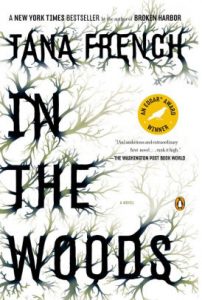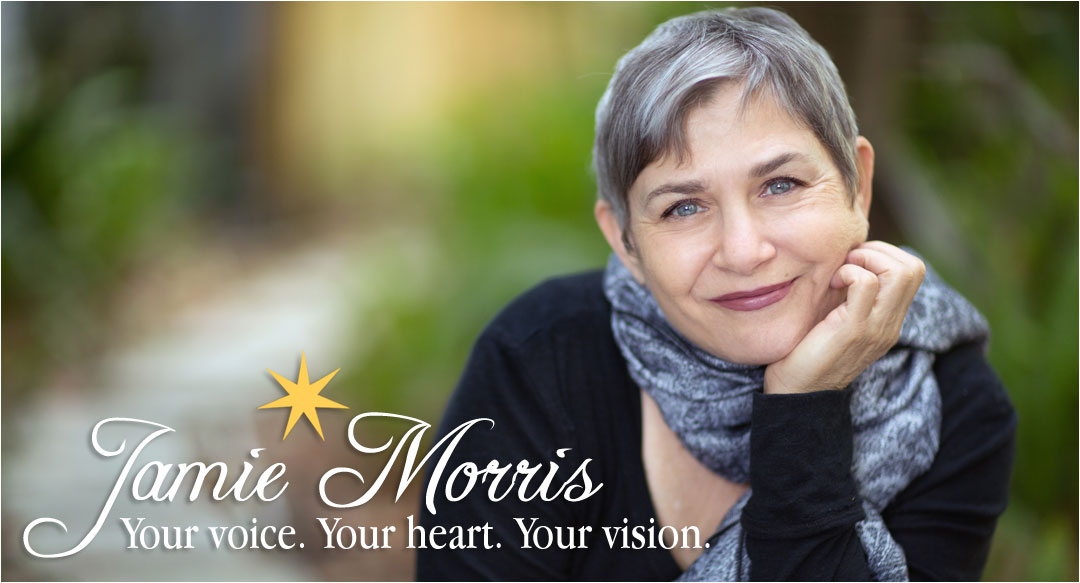JILL AND I MEET EVERY SUNDAY TO WALK, talk books and life, and watch something on TV. Lately, our book chat and viewing choice have coincided as we’ve watched—and discussed—DUBLIN MURDERS. This eight-episode series is based on two Tana French mysteries: IN THE WOODS and THE LIKENESS.

 Both books have powerful, intricate plots. So we were interested to see that screenwriter Sarah Phelps’s television adaptation has dovetailed their plot lines—creating a single interwoven narrative of the two stand-alone mysteries.
Both books have powerful, intricate plots. So we were interested to see that screenwriter Sarah Phelps’s television adaptation has dovetailed their plot lines—creating a single interwoven narrative of the two stand-alone mysteries.
The novels (spoiler alert!)
IN THE WOODS: When Detective Rob Ryan was a kid, he and two of his friends went into the woods near their home in Knocknaree, Ireland, to play—but only Rob came out, and he remembers nothing of what happened that day. Author French flings wide a door on the possibility that the mysterious disappearance of the two other children had a supernatural cause. Certainly, the incident continues to haunt Rob twenty years later, its long shadow creating an enticingly spooky atmosphere for the present investigation, the murder of young Katy Devlin, whose body was found in those same woods.
Rob and his partner, Detective Cassie Maddox, are assigned the case, giving Rob the opportunity to reopen inquiries into the still-unsolved disappearance of his childhood friends. But what only Cassie knows is that Rob—who was once called Adam Ryan—is the same kid who emerged, alone, physically unharmed but profoundly disturbed, from the Knocknaree woods in 1984.
Having hidden his identity for twenty years, Rob is confident no one will associate him with young Adam. This identity sleight of hand is important because, if anyone besides Cassie knew who he was, Rob would be thrown off the case—and now that he’s back in the woods, Rob is not going to rest until he finds out what happened to his friends, and to Katy Devlin, and whether the tragedies are connected.
THE LIKENESS: French’s second novel, THE LIKENESS, picks up some months after IN THE WOODS ends. Although Rob is mentioned here, he is no longer a relevant character; it’s Cassie’s story entirely. While an unlikely coincidence pulls the trigger on this story, there is no hint of the uncanny in the book—only a healthy dose of psychological drama. Hoping to tease out her doppelgänger’s killer, it is Cassie, now undercover for “Operation Mirror,” who is playing cat and mouse with her identity.
The screenplay (spoiler alert!)
DUBLIN MURDERS: As I mentioned, for the TV production, the plots from these two novels have been twisted together to make a single story. This has been accomplished in several ways. Among them is the anticipated construction of a roadway, which originally threatened just the titular forest of IN THE WOODS, but now also touches the manor house at the center of the action in THE LIKENESS.
Also, in the DUBLIN MURDERS script, the plot from THE LIKENESS has been twisted to create a follow-up to a tragic childhood accident for Cassie—one that’s scarred her psyche every bit as much as Rob’s mysterious experience in the woods has scarred his. But while in the original telling of IN THE WOODS Rob’s backstory is as deeply entwined with the current-day tale as the vines winding among the trees of the Knocknaree woods, neither IN THE WOODS nor THE LIKENESS includes much of Cassie’s backstory at all. From them, we discover little about her that predates her time as an undercover officer, just prior to her partnership with Rob on the Dublin Murder Squad.
But, like author French does with the disappearance of Rob’s young friends, screenwriter Phelps imbues the tragedy in Cassie’s childhood with more than a hint of the supernatural—developing both a parallel to Rob’s mysterious backstory and giving the heretofore no-nonsense Cassie as tangled a personality as Rob’s by doing so.
With this addition, Phelps inflates an issue of identity confusion that’s at the foundation of THE LIKENESS’S murder investigation. In the TV version, when Rob’s and Cassie’s stories diverge, and Cassie leaves Rob alone with the investigation of the Knocknaree murder to go undercover on Operation Mirror, that now-sensationalized thread colors Cassie’s experiences, quite lividly.
Sensational? Or sensationalized?
Jill and I agree that DUBLIN MURDERS is a dynamic, suspenseful—often pulse-raising—adaptation. It was exciting to find ourselves in the midst of unfamiliar narrative territory, rather than just watching a stylish retelling of books we know so well. But for me, this retelling feels over-hyped, relying as it does on Cassie’s manufactured—gratuitous—response to an early tragedy. (In this opinion, Jill and I are not in absolute agreement.)
As much as the series titillated me as a viewer, as a reader, I leave it feeling overstimulated, as if I’ve eaten an entire fluffy cone of hot-pink cotton candy and now there’s too much sugar racing through my brain. (I’m planning an early 2020 re-read of THE LIKENESS to settle myself back down!)
Books vs. movie adaptations
When I discussed my concerns about DUBLIN MURDERS with ghostwriter/freelance editor pal Tom Wallace, he said, Reading a book is more active, and watching a movie or TV show is more passive. Books demand you be engaged. You’re doing some work, making more of a contribution to the story. When you read fiction, you have to use your imagination, bring something to the characters, the setting. This develops more intellectual muscle [than watching films], the ability and inclination to invest real thought and imagination.
Tom also mentioned the compression of story common in movie adaptations, citing Michael Chabon’s novel WONDER BOYS for example, saying, Reading the book is a much richer experience. If you read the book first, when you’re watching the film, you get to spots where you think, “It’s thin right there,” because the screenwriter [Steve Kloves] has had to connect two important plot issues with a very thin line. They’re under a time constraint. Everything has to fit into 120 minutes. Because the screenwriter doesn’t have time to fully develop the threads between plot points, those spots can feel thin. But when you read Chabon, nothing feels thin; he doesn’t write anything he’s not going to write in a rich way.
(Interestingly, where Tom finds Chabon “rich,” Jill finds him dense and says she connected more to Kloves’s WONDER BOYS adaptation than to the novel.)
Episodic
I’m glad to say DUBLIN MURDERS doesn’t suffer from this sort of compression. Too often, though, while film adaptations may be true to the events of the book, they end up feeling episodic—quick-juxtaposing one important scene after the next. Although they may hit every plot point, as Tom says, they tend to do so without creating enough space, enough context for those points to unfold organically. Instead, transitions from beat to beat may feel abrupt, making for a fractured, staccato delivery of the story.
For example, six-part British mini-series WOLF HALL, based on Hilary Mantel’s stunning historical novels WOLF HALL and BRING UP THE BODIES (screenplay by Peter Straughan) and 2011’s JANE EYRE, based on Charlotte Brontë’s novel of the same name, exemplify this rapid-fire approach. In both cases, the movies rush through the intricate emotional landscapes evoked by the books, leaving me less than satisfied. Like Oliver Twist, watching them, I wanted to beg, Please sir, may I have some more?
(Jill, on the other hand, loves the 2011 version of JANE EYRE and credits screenwriter Moira Buffini with creating both a beautiful translation of the almost 200-year-old book and one that makes the story accessible to a contemporary audience. Also, while Jill did feel rushed by the WOLF HALL miniseries, the authority with which actor Mark Rylance brings to life historical figure Thomas Cromwell made watching WOLF HALL not only a worthwhile experience for her, but, she says, an awesome one!)
Back to Dublin
But let’s return to DUBLIN MURDERS, which, as I said, doesn’t suffer from Oliver Twist syndrome. Still, watching the show as a writer, editor, and lifelong reader, I found myself wondering about this adaptation business. For instance,
- What does Tana French think of the screenplay? And other authors whose books have been rewritten for the screen? How do they feel about the adaptations of their work?
- Does preparing a book for the screen necessitate significant tightening, tweaking, and manipulation? Is that simply a function of adaptation? Or is such treatment a reflection of our heightened, hyperbolic times?
- How often are the often contrived screen versions of novels all that most people remember of the original books? And if they are, is that a loss of some kind? Or does it just preserve the work for our fast-paced world?
And the big question
- Is the book always better than the movie?
I think it may be. And so does Tom. At least most of the time. And Rick Riordan, author of PERCY JACKSON AND THE OLYMPIANS, among many other books for younger readers, agrees. In a post on his site titled “Books to Movies,“ Riordan, who is famously unhappy with the adaptations made of two of his novels, writes,
…. very few books … are turned into decent movie versions … [T]he vast majority are dreadful adaptations…. Still, hope springs eternal…. despite the fact that I have never walked out of the cinema and said, “Wow, the movie was so much better than the book!”
Jill, though? She says, “If screenwriters are mining the story in a new way for the their medium, I’m all for that.” And she found a 2013 FLAVORWIRE article titled “10 Authors Who Loved the Film Adaptations of Their Books” to back up her contention that at least some authors are happy with how the movie version of their work turned out!)
But despite our differences of opinion, Jill and I are proving Riordan right in one thing: Regarding book-to-film adaptation, hope does seem to spring eternal—demonstrated in this case by the Jill’s and my mutual very high hopes for Greta Gerwig’s new version of Louisa May Alcott’s LITTLE WOMEN!
* * *
Thanks to writer friend Teri Anpowi Saveliff for sending me looking to Rick Riordan for his thoughts on film adaptations!
